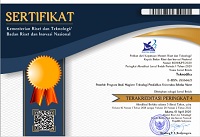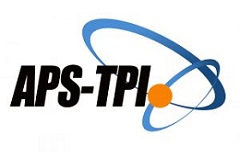Perbedaaan Pengaruh Pembelajaran Mata Pelajaran Kimia Model Problem Based Learning (PBL) Dan Cooperative Learning Tipe Think Pair Share (TPS) terhadap Prestasi Belajar Siswa Ditinjau dari Aktivitas Belajar Siswa SMA Negeri di Grobogan
Abstract
This study aimed to: (1) To determine the effect of differences in chemistry learning PBL models and models of SMT for high school student achievement in Grobogan. (2) To find out which is better student achievement with learning activity is high or low high school learning activities in Grobogan. (3) To understand the interaction model of learning by students' learning activities to the achievement of high school students studying chemistry in Grobogan. The research was conducted at several high schools in Grobogan including; SMA N 1Gabus, SMA N 1 Kradenan, SMA N 1 Wirosari. The model used in this research is experiment with 2X2 factorial design. The study design using experimental. The results showed that. (1) Differences Influence Model Model PBL with TPS on Learning Achievement in Chemistry. Results of Two-Way ANOVA analysis showed a significant difference in learning achievement chemical groups using PBL and group learning model TPS, with a value of F = 5.432, p <0.05 where student achievement in the subjects of Chemistry with PBL models better than the student who uses a model TPS. (2) Differences in Effects of High learning activities with learning activities Low toward achievement of learning chemistry. Results of Two-Way ANOVA analysis showed a significant difference in learning achievement Chemistry group of students with high learning activities and groups of students with low learning activity, with the value of F = 8.218, p <0.05 where learning achievement in the subjects of Chemistry students who have high learning activity is better than the students who have low learning activities . (3) Interaction Effect Model of learning and learning activities in relation to the achievement of learning chemistry. The result of the calculation of the Two-Way ANOVA analysis finds that there are interactions between the learning model with learning activities to learning achievement Chemistry with a value of F = 4.020, p <0.05 where the average value of learning achievement chemical group PBL models with high learning activity has the highest value of the interpretation of study with a mean of 84.41 while PBL model group with low learning activity have the lowest average value for 74.13.
Keywords
Learning Model Problem Based Learning; Think Pair Share; Chemistry learning achivement; Learning activities
Full Text:
PDFRefbacks
- There are currently no refbacks.





.png)













